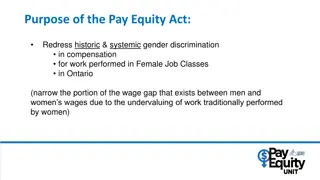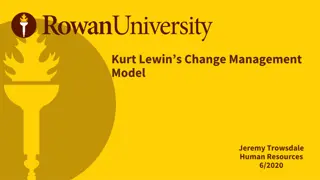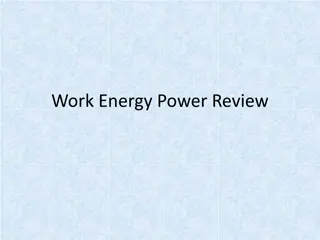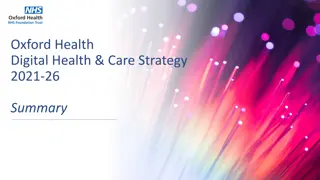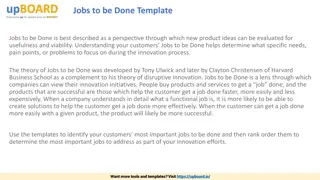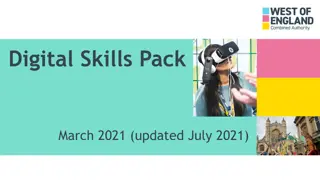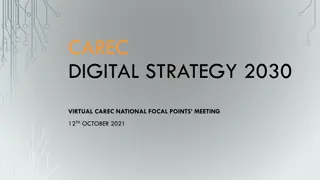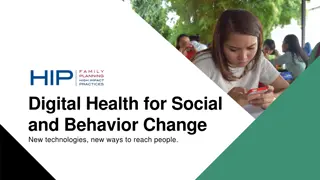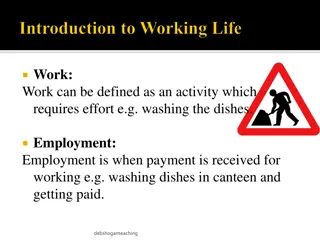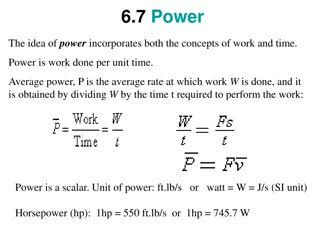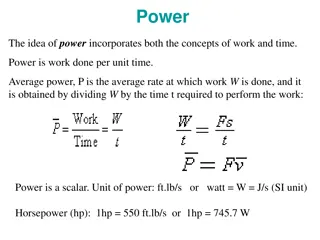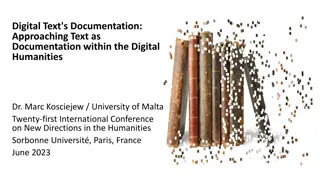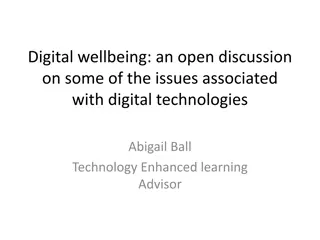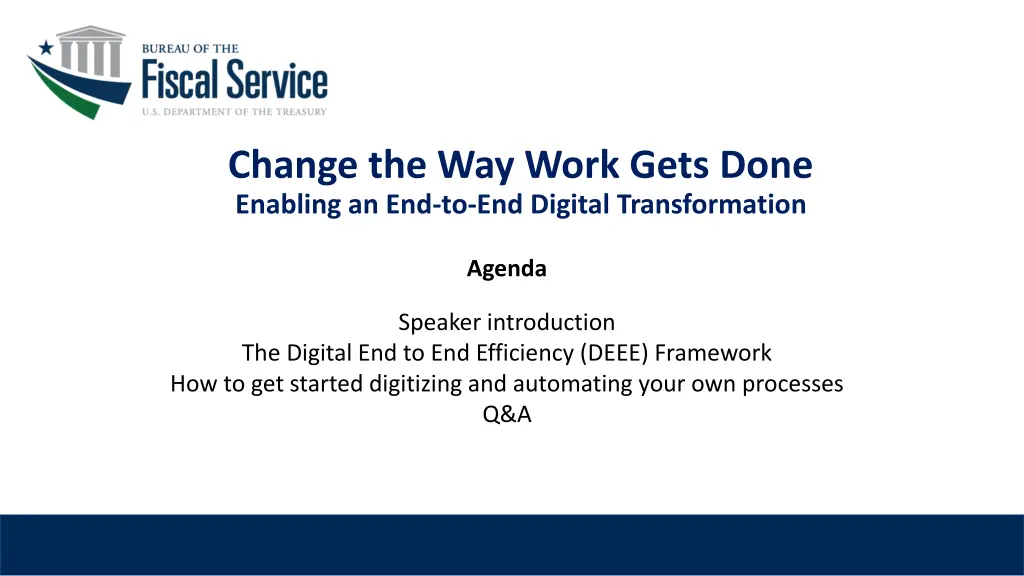
Achieving Digital Transformation Excellence
"Join us as we delve into the Digital End-to-End Efficiency Framework, offering insights on initiating digitalization and automation processes. Discover the DEEE Playbook to enhance process efficiency through human-centered design and stakeholder engagement in federal government services. Learn how to address manual processes and drive innovation for a more streamlined approach."
Download Presentation

Please find below an Image/Link to download the presentation.
The content on the website is provided AS IS for your information and personal use only. It may not be sold, licensed, or shared on other websites without obtaining consent from the author. If you encounter any issues during the download, it is possible that the publisher has removed the file from their server.
You are allowed to download the files provided on this website for personal or commercial use, subject to the condition that they are used lawfully. All files are the property of their respective owners.
The content on the website is provided AS IS for your information and personal use only. It may not be sold, licensed, or shared on other websites without obtaining consent from the author.
E N D
Presentation Transcript
Change the Way Work Gets Done Enabling an End-to-End Digital Transformation Agenda Speaker introduction The Digital End to End Efficiency (DEEE) Framework How to get started digitizing and automating your own processes Q&A
Speakers Speakers Jesrael Lopez Bernadette Goodwin Program Manager as well as one of the Diversity, Equity, Inclusion and Accessibility (DEIA) leaders at Treasury's Bureau of the Fiscal Service, supporting financial management transformation initiatives that emphasize the use of new and emerging capabilities. Acting Executive Architect in the Office of Financial Innovation and Transformation within Treasury s Bureau of the Fiscal Service (Fiscal Service). In this role, she leads innovation efforts to transform Federal financial management. Page 2 L E A D T R A N S F O R M D E L I V E R
The challenge The federal government is instrumental in delivering services for the public, yet The federal government is instrumental in delivering services for the public, yet many business processes we rely on today are manual and costly. many business processes we rely on today are manual and costly. We are still focused largely on transaction management. There are many processes that remain heavily manual. Fixes have been segmented, focusing on improving isolated parts of a task, rather than process. Page 3 L E A D T R A N S F O R M D E L I V E R
The DEEE Playbook The Playbook helps agencies identify improvement opportunities through detailed analysis of process documentation, while also understanding the experience, needs, expectations, and pain points of the users involved. Page 4 L E A D T R A N S F O R M D E L I V E R
Human-Centered Design (HCD) Traditional Process Analysis Collect summary data and existing analysis on major FM challenges, identify and examine process documentation. Apply techniques focused on collaboration, conversation, and engagement from customers. DEEE Playbook Assists in managing users expectations and levels of satisfaction with the process/service. Fact-Based Transparency from Historical Data. Quickly find opportunities. Result is more efficient and effective. Analysis not dependent on other people's schedules. Users develop a sense of ownership with solution implementation. Obtain a clear End-to-End picture of documented process. The collaborative process generated more solution options. Page 5 L E A D T R A N S F O R M D E L I V E R
Key Key s stakeholders takeholders to to e engage ngage Process Improvement Project Team Agency Leadership A selected group of agency representatives identified to work towards improving a selected business process and sponsored by agency leadership. CFOs, Directors, Branch Chiefs, and/or other leaders of customer and provider agencies responsible for leading business transformation efforts and empowered to make decisions. Process Owners Process SMEs & Users Individuals (end users & service provider) that oversee or manage the selected process overall and have insight into processes, procedures, policies, tools, and workforce. Stakeholders that execute or carry out the selected process ( fingers on keyboards ) and those with expert process knowledge (end user & service provider). Policy/Audit/Risk Teams OCIO/Technology Teams Practitioners who understand, maintain, and deploy agency technology systems and experts to help assess emerging technologies. Individuals or teams responsible for auditing and assessing policy controls of end-to-end processes. Deploying this Playbook requires engaging a cross-level, cross-organization set of stakeholders to understand perspectives across different organizations and drive feasible, desirable, and viable solutions. Page 6 L E A D T R A N S F O R M D E L I V E R
DEEE DEEE Playbook summary Playbook summary DEEE Select Solution(s) W H E R E T O S TA R T ? H O W T O S O LV E ? W H AT T O S O LV E ? Deploy selected solution(s) and expand across processes Reduce/Optimize: Eliminate cumbersome process steps and streamline Digitize: Move from manual to systematic or automated processes Define Scope Select Process Analyze Process Assess Solutions Prioritize Solutions Innovate: Transform digital capabilities with intelligent automation Provides a set of opportunities for process improvement Produces a set of prioritized solutions Results in a set of deployed and scaled solutions Page 7 L E A D T R A N S F O R M D E L I V E R
Where to start? Where to start? 1. The most important thing is to start with the full depth and breadth of processes all the various business scenarios and all facets of processes. 2. Organize them, if they aren t already, into a process taxonomy which is basically a way to decompose multiple layers of sub-processes to overall high-level business processes. 3. Look for opportunities based on key criteria. Page 8 L E A D T R A N S F O R M D E L I V E R
Where Where to start continued to start continued Key criteria to select processes with most potential cost savings: Transactional (vs. Analytical) High Volume More Manual Many Staff Members The more staff involved in manual tasks, the greater the inefficiency and potential gain from digitization. Manual tasks are generally more costly, less scalable, susceptible to error, and can be digitized for cost savings. Transactional activities are more routine and generate value from quick and accurate processing, which lends itself to digitization and automation. Greater volume translates to scale for efficiency gains and results in larger overall opportunity. Page 9 L E A D T R A N S F O R M D E L I V E R
What to solve? What to solve? 1. Identify your pain points: A challenge or process inefficiency from the user s experience. 2. While analyzing a process, many pain points may be uncovered. Categorizing helps in the prioritization and identification of the pain points that represent the greatest opportunity for efficiency. Page 10 L E A D T R A N S F O R M D E L I V E R
What to solve continued What to solve continued Redundancies or duplicative activities across teams Service delivery inefficiencies (incl. customer issues/complaints) Disconnected steps or inefficient handoffs within a process Manual process steps Opportunity Categories Activities to improve the process outcome (vs. process efficiency) High volume of occurrences Historical internal control risks and/or audit findings Data quality issues Page 11 L E A D T R A N S F O R M D E L I V E R
How to solve? How to solve? To help think through the potential solution set for a given pain point, DEEE divides solutions into three solution categories with varying level of cost and technical advancement. Page 12 L E A D T R A N S F O R M D E L I V E R
How How to solve continued to solve continued Reduce/Optimize: Reduce/Optimize: Eliminate cumbersome process steps and streamline What it is: Reduce unnecessary activities considering whether the way business is done today is how it needs to be done (including policy changes to enable process changes or trainings, etc.) Investment: Low to no cost (non-technology solution) Digitize: Digitize: Move from manual to systematic or automated processes What it is: Apply digital technology to automate/eliminate manual steps, reduce paper-based steps, and streamline the process Investment: Limited cost (often using existing technology or capabilities) Innovate: Innovate: Transform digital capabilities with intelligent automation What it is: Apply new and emerging technologies to transform business processes and unlock long- term efficiency gains Investment: Variable cost (may include net new investments) Page 13 L E A D T R A N S F O R M D E L I V E R
Questions Questions
Supplementary Tools & Job Aids (1/2) The DEEE Job Aids and Tools can be leveraged during each step of the playbook to analyze end to end (E2E) processes, identify pain points, and evaluate solutions to reduce/optimize, digitize, or innovate processes. DEEE Framework Step What is it? End to End Business Processes There are 11 end to end processes definitions that provide a standardized understanding of how government carries out a specific financial management process. Each start with a user's goal and goes through the steps to take until the goal is fulfilled. Process Selection Criteria This criteria allows users to identify the end-to-end business process with the greatest opportunity for efficiency gains. A simplified process visual that can be leveraged to build process understanding and facilitate stakeholder interviews, accelerating findings by focusing in on the key interactions of roles along a process journey. Process Overview Visualization Template This job aid guides the user during interviews to understand the interview experience, identify pain points and areas for improvement, and validate methods. Interview Guide Template This tool assists in creating representative journey maps and personas to document user goals (for outcomes/experience of the process), core traits, needs, and frustrations. Journey Map Template Page 15 L E A D T R A N S F O R M D E L I V E R
Supplementary Tools & Job Aids (2/2) The DEEE Job Aids and Tools can be leveraged during each step of the playbook to analyze end to end (E2E) processes, identify pain points, and evaluate solutions to reduce/optimize, digitize, or innovate processes. DEEE Framework Step What is it? This job aid is used to document and organize pain point information to trace and reference when collecting process information. Pain Point Catalog Template This tool helps agencies analyze the full scope of challenges which may require solutioning and/or resolution to optimize the end-to-end process and down select to those best aligned to project goals and agency priorities. Pain Point Down Select Tool Solution Category Decision Tree This job aid guides the user in the process of determining potential solution categories for a pain point (reduce/optimize, digitize and/or innovate). This tool helps prioritize potential pain point / solution combinations using criteria and agency goals/priorities to identify the best use of resources to resolve each pain point. Solution Prioritization Tool A Transformation Blueprint can be used to help visualize key process pain points, and associated reduce, optimize, and digitize solutioning opportunities. Transformation Blueprint Template Page 16 L E A D T R A N S F O R M D E L I V E R





